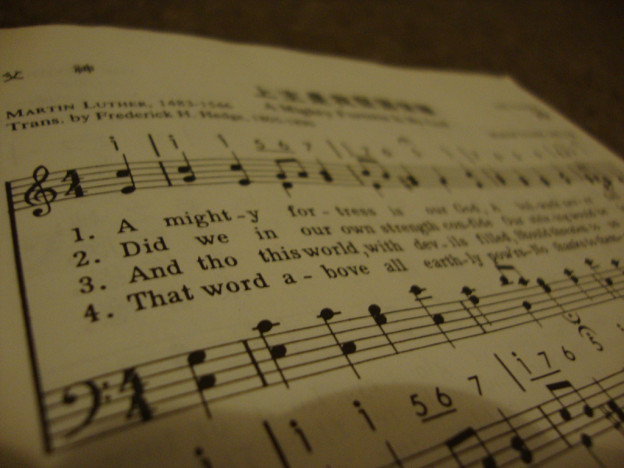Bob Kauflin shares three categories to help you work out what to sing in your local churches this year.
1. Choose songs people can sing.
In the church (and even at a conference), we shouldn’t assume people have the same songs on their iTunes. Or that everyone even uses iTunes. That’s due both to our individualized musical culture and the multi-generational nature of the church. In the church, we haven’t gathered to use the key that makes the leader sound best, because the entire congregation is singing!
So here are some suggestions for how to know whether a songs are “singable.”
– They can usually be picked up after the first or second hearing, usually due to melodic or rhythmic repetition.
– They typically fall within a range of a low A to a high D. You can get by with higher or lower if the song doesn’t stay there long.
– They don’t have melodies with a lot of unexpected twists or ones that are so bland no one can remember them.
– The leader sings the melody consistently and doesn’t add stylistic variations every other bar.
The third point can be a bit subjective between generations – for example, our church sings Blessed Be Your Name well even though it has a reasonably complex rhythm (though I think its simple 4-chord pattern helps balance things out).
2. Choose songs people want to sing.
…the primary reason [a song is] pleasant is because we’re meditating on and proclaiming the works, word, and worthiness of our great God and Savior. But it can be musically pleasant as well. A great lyric can go unheard for decades, if not centuries, because it’s wedded to a poor melody.
Here are a few thoughts on determining whether people want to sing a song:
– People comment on how much they enjoyed singing it.
– The majority of the congregation are actually singing the song with enthusiasm.
– The melody grows on you rather than sounding old or tired by the end of the song, or after the second week.
– The melody emotionally affects you and the people you lead.
– The rise and fall of the melody correspond with the emotional rise and fall of the lyric. In other words, when you want to belt out some truth about God you’re in the higher range of your voice.
Last year we learned re-tuned hymns like Jesus, I My Cross Have Taken, Psalm 130 (From the Depths of Woe) and Rock of Ages where these great hymn texts have been married with fresh, inspiring tunes that our church enjoy singing.
3. Choose songs people should sing.
Here are some thoughts on how to know which songs we should sing:
– People know better who Jesus is, what he did, and why he did it through singing our songs.
– They help people deepen their theology and connect with history.
– There’s a good chance we’ll be singing these songs a year from now, maybe even five, maybe even 100.
– People walk away with truth that affects them, and not just tunes.
– There is enough content in our songs to stand on its own without any music.
– A particular song brings a variety of feel, depth, and/or length to the songs we’re singing. i.e., psalms, hymns, and spiritual songs.
Bob also points out that the psalms (the songbook for God’s people) cover a wide range of emotions and themes, and there’s lots to learn from the psalms regarding what songs we should sing.
ALSO: If you’re interested, this e-book compiles his most helpful blog posts on anything from worship, the gospel, running rehearsals, music, arrangements, and so on. Practical and helpful.




